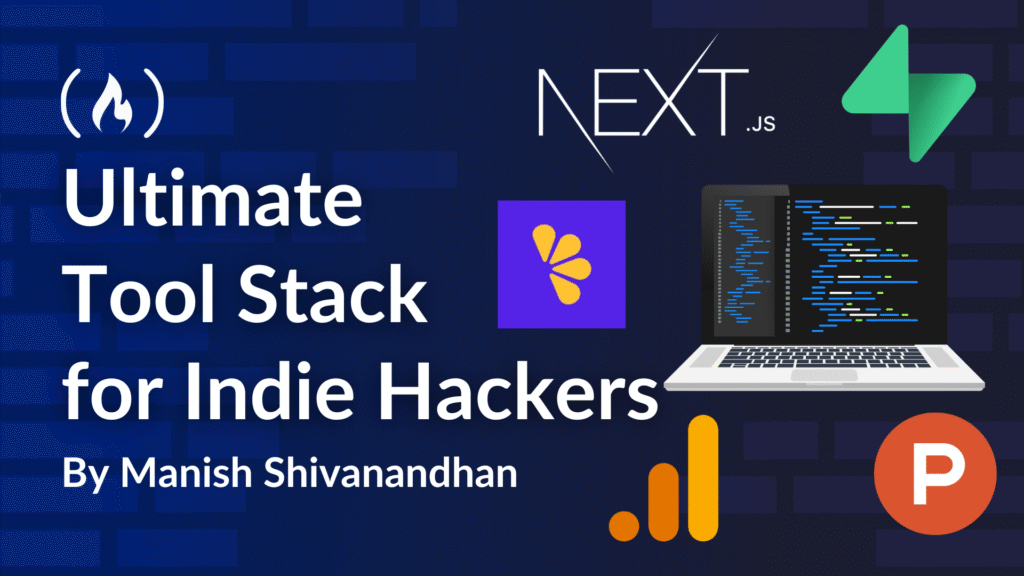If you’re building something on your own, you don’t have time to mess around with bloated platforms or complicated setups.
You want tools that work, tools that feel intuitive, and tools that help you move quickly from idea to launch.
This article walks you through a tool stack that’s become popular with indie hackers. Whether you’re building a simple app, launching a SaaS, or testing a digital product, this stack will carry you from your first survey to your first sale.
Table of Contents
How to Validate Your Idea Before You Build

Before writing any code, you have to make sure people actually want what you’re about to build. This step is often skipped, but it’s where successful products are born.
You don’t need anything fancy here. Google Forms is a perfect starting point. It’s free, fast, and easy to share.
You can ask simple questions like what tools people are currently using, what frustrates them, or whether they’d pay for a better solution. Keep your form short and clear, and send it out to communities like Indie Hackers, Reddit, or even your own network.
If you’re looking for something more polished, YouForm is a great upgrade. It lets you create better-looking forms with more control over the design and branding.
Youform also gives you insights like where people drop off or how long they spend answering. That feedback can help you refine both your product and your message.
Whether you use Google Forms or YouForm, the goal is the same: find out if your idea has legs before you build anything.
Tech Stack for Indie Hackers

Once you’ve validated the idea and know there’s interest, it’s time to build.
This is where many indie hackers hit a wall. The tech stack can make or break your momentum. You want something modern, fast, and flexible, without needing to stitch together a dozen services.
Next.js is one of the best choices for building apps and websites. It’s built on React, which means you can reuse components and move quickly.
But unlike plain React, Next.js also gives you routing, server-side rendering, and static generation, all out of the box. That means you can use it for your landing page, dashboard, a blog, or your full app.
Now, you’ll need a backend. That’s where Supabase comes in.
Supabase gives you a fully managed PostgreSQL database, user authentication, file storage, and even real-time updates. It’s open source and developer-friendly.
You can sign up and have a working backend in minutes, without writing server code or managing infrastructure. It plays beautifully with Next.js, and for many projects, it gives you everything you need without ever spinning up your own server.
Hosting for Indie Hackers

Once you’ve built your app, you need to get it online. Hosting used to be one of the most painful parts of building solo, but these days, many platforms make it feel easy and remove the need for a dedicated DevOps.
Tools like Vercel, Railway, and Sevalla let you connect your GitHub repo and deploy your app with a few clicks. They handle your databases, environment variables, deployments, and logs in a single dashboard. It’s a perfect fit for full-stack apps using Next.js and Supabase.
Payment Solutions for Indie Hackers

Once you’re ready to charge for your product, you need a payment provider you can trust.
Stripe is the industry standard. It supports one-time payments, subscriptions, and even complex pricing logic. It’s incredibly powerful – but it also has a bit of a learning curve. The setup process can feel like overkill if you’re just trying to see if someone will pay $5 for your tool.
That’s why many indie hackers start with LemonSqueezy. It’s a checkout-first platform that handles VAT, tax compliance, licensing, and payments all in one.
You can set up a product, embed a buy button or link, and start collecting payments within a day. It’s built with creators in mind, which means fewer steps and more features tailored to solo projects.
If Stripe is the enterprise-grade option, LemonSqueezy is your lightweight indie companion.
Analytics for Indie Hackers

Once you have traffic, users, and sales, it’s time to learn from them. This is where analytics come in.
Google Analytics is the traditional choice. It’s free and feature-rich. You can track where people come from, what pages they visit, how long they stay, and more. But it’s also complex and a bit heavy, especially for smaller apps. If you just want quick insights, it can feel overwhelming.
That’s why tools like Fathom Analytics are gaining popularity. Fathom gives you a clean, privacy-friendly dashboard with just the metrics that matter: page views, unique visits, and bounce rate. It’s GDPR-compliant and super easy to add to your site. You won’t get lost in charts or filters. You’ll exactly know what’s going on.
If you want to go even deeper, especially inside your product, PostHog is worth a look. It offers product analytics like event tracking, funnels, and even session recordings.
Want to know which button users click most? Or where do they drop off in your signup flow? PostHog can show you. It does take more setup, and you may want to self-host it, but for serious insights into user behaviour, it’s hard to beat.
Launch Where Your People Are

You’ve built it, hosted it, and maybe even started making money. Now you need to tell people about it. A strong launch can make all the difference.
Product Hunt is a great platform for tech-focused launches. If your product solves a real problem and looks good, it’s a great way to get attention.
Create a clean page with a short tagline, a few screenshots, and maybe a quick demo video. When you launch, stick around and reply to comments. Your first customers might come from there.
Indie Hackers is more about the long game. It’s a community of makers sharing their journeys. You can post updates, ask questions, and get feedback throughout the building process. When you do launch, you’re launching to people who already know what you’ve been working on. That trust makes a big difference.
Reddit can work too, but it’s tricky. Each subreddit has its own rules, and users hate spam. The key is to be helpful. Don’t just drop a link, share what you learned, show what you built, and ask for feedback. If it feels like a conversation, not a pitch, people will respond.
How It All Comes Together
Let’s say you’re building a lightweight team dashboard called ManageBuddy.
You start by posting a quick survey with Google Forms to r/SideProject and Indie Hackers. Fifty people respond, and many say they’d pay for a tool like this.
You build your app using Next.js and Supabase. Supabase handles your database and authentication. You deploy to Railway, link up your GitHub repo, and go live. For payments, you pick LemonSqueezy since it’s quick and simple. You embed the checkout page into your app and start charging $10/month.
You add Fathom to your site to see how people are finding it. Later, you install PostHog to see which features they use most. When you’re ready to go big, you launch on Product Hunt. The next day, you share your story on Indie Hackers and Reddit. Feedback starts rolling in. People sign up. Some even pay.
In a few weeks, you’ve gone from idea to product, with users, sales, and feedback guiding your next steps.
Conclusion
The best thing about this stack is that it doesn’t demand perfection. You don’t need to be an expert in every tool. Start small, validate your idea, and build something useful.
These tools – Google Forms, Next.js, Supabase, Railway, Stripe, Fathom, and so on – are here to help you get to your first version quickly.
Don’t get stuck trying to pick the “perfect” stack. What matters is progress. These tools lower the barrier so you can focus on solving a real problem and connecting with real users. Build something simple, launch it, and improve from there.
You don’t need a big team. You just need the right tools and the will to keep going. Happy hacking!
Hope you enjoyed this article. Connect with me on LinkedIn or visit my website.
Source: freeCodeCamp Programming Tutorials: Python, JavaScript, Git & MoreÂ

